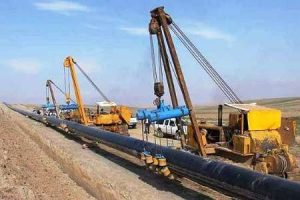Application of polyethylene pipe in gas supply and gas transmission

The use of polyethylene pipes in gas supply and transmission dates back to the 1950s in US gas supply projects. This practice began in Europe in the 1970s, in Britain and France. At present, more than 90% of US and Canadian gas transmission lines are made of polyethylene. Polyethylene pipes are used in gas transmission networks not only in the United States, but all over the world.
Due to the characteristics of natural gas, the use of polyethylene pipes in gas transmission systems is one of the first applications of this pipe in the oil, gas and petrochemical industries. Polyethylene is a type of polymer and is known by the formula C2H4-C2H4-C2H4. The use of these pipes is common in most countries. In Iran, polyethylene pipes are used to supply gas to new cities and villages.
Advantages of using polyethylene pipe in gas supply and gas transmission:
- Easy transport of products due to light weight
- Impact resistance
- Possibility to loop pipes up to 125 mm in length up to 600 meters
- Resistance to destructive solar radiation (UV rays)
- Ease and high speed in installation due to the ability to weld pipe to pipe and the use of polyethylene interfaces and flange fittings
- Due to its elasticity, these pipes can be connected outside the trench (drilled channel) and transferred to the trench without breaking the pipe and the boiling point.
- The flexibility of these pipes has allowed users to use them on uneven ground and create allowable bends in it (allowable bend radius is 20 times the nominal diameter of the pipe)
- Excellent resistance to earthquakes and landslides, especially underwater, which allows more layers to move.
- Unlike other fluid transfer pipes, in which the transfer capacity of materials decreases over time due to corrosion, sediment, settling and other causes, polyethylene pipes with an extremely polished surface have the least resistance to the passage of liquids. Updated and will cause a uniform and constant flow of fluid throughout the life of the pipe.
- Resistance to corrosion, abrasion, rot, chemical fluids and lack of water absorption
- Engraving all the specifications of the pipe on its body, legibly, has made it easy to trace it after years.
- Very low cost in installation, commissioning and maintenance of polyethylene pipelines
- Reduce project execution time
To connect polyethylene gas pipes, electrofusion method is used in connection and welding, so that in connection, polyethylene electrofusion fittings are used and in welding, electrofusion welding is used. Note that only electrofusion method is used for gas supply. The main welding mechanism is that the welding place and the joints are heated, and this heat causes the connecting pipe to become soft and pasty, and after complete cooling, it sticks together so that the pipe and the connection become one. This heat is generated in the electro-fusion method by electro-fusion device and special connections of this method.